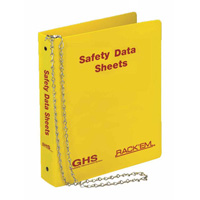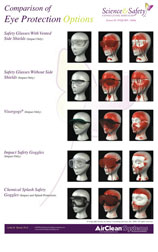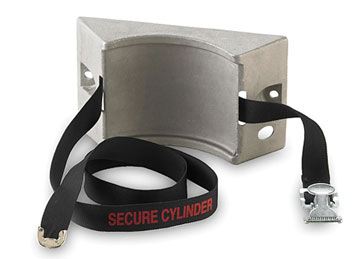| The Home page of ILPI's Safety Data Sheet (SDS) Resource, the leader in SDS information since 1995! | |
| The history and philosophy behind this resource. | |
| A curated collection of books and reference materials concerning Safety Data Sheets and closely related topics. | |
| Paste your plain text SDS into the SDS-Demystifier, and it will be converted into a hypertext-enriched document with links to detailed explanations of each key term. | |
| An extensive list of frequently asked questions about Safety Data Sheets including regulations, content, compliance, and more. | |
| A humorous take on Safety Data Sheet jargon. Fill in the blanks on our entry form to generate a personalized Unsafety Data Sheet to share with your coworkers. | |
| Since 1995, we've maintained this massive curated list of the best places to find Safety Data Sheets on the Internet. | |
| You are here! Way more than a glossary, this hypertext-enhanced resource covers hundreds of SDS-related terms and expert knowledge. Each entry includes both the SDS relevance and links to additional authoritative resources. | |
| Archived results of Safety Data Sheet related polls taken by some of our millions of site visitors | |
| The OSHA regulations behind SDS regulations, including the inspection guidelines and over 400 official interpretations letters under the Hazard Communication Standard | |
| Commercial suppliers of SDS authoring and management software as well as cloud compliance services. | |
| Commercial companies that will create SDS's for your specific needs as well as SDS translation companies. |

Safety signs, banners, and scoreboards? Get yours at Safety Emporium!
Definition
CHIP- The Chemical (Hazard Information and Packaging for Supply) Regulations (now obsolete; see below) provided information on hazardous chemicals in Great Britain. These regulations were designed to comply with various European Union (EU) directives relating to the supply of dangerous chemicals.
Additional Info

Get your SDS binders, centers and more from Safety Emporium.
CHIP was amended on a regular basis since it was first adopted as the Chemicals (Hazard Information and Packaging for Supply) Regulations in 1994. Therefore, one may see references to CHIP 96, 98, 99 etc. in older literature. Each new version revoked the previous version. The last version of CHIP was issued in 2009 and was also known as CHIP4.
CHIP4 (2009) broke with previous versions by dropping (Material) Safety Data Sheets (SDS's) compliance which was then addressed through the European REACH regulation.
The remainder of the CHIP regulations were phased out by the European Regulation on Classification, Labelling and Packaging of Substances and Mixtures (known as the CLP Regulation, (EC) No 1272/2008) which is the EU's implementation of the Globally
CHIP4 regulations required the supplier of a dangerous chemical to:
- Identify the hazards (dangers) of the chemical. This process is called "classification".
- Provide information about the hazards to their customers. This information is usually provided on the package/label.
- Package the material safely.
CHIP also defined classes of danger for "substances and preparations dangerous for supply" and used a letter coding system for these classes. You may encounter these symbols on outdated European MSDS's. In addition, labels and sheets in the EU carry required risk phrase and safety phrase codes. In our opinion, these coding systems are not only useless, but confusing - why write a crytic code such as "Xn" instead of simply stating "Harmful"? Regardless, here is a summary of the major classification codes that were used:
| Physico-Chemical Properties1 | ||
|---|---|---|
| Code Letter(s) & Meaning |
Danger Symbol | Description |
| E Explosive |
 |
Solid, liquid, pasty or gelatinous substances and preparations which may react exothermically without atmospheric |
| F+ Extremely Flammable |
 |
Liquid substances and preparations having an extremely low flash point and a low boiling point and gaseous substances and preparations which are flammable in contact with air at ambient temperature and pressure. |
| F Highly Flammable |
 |
|
| (none) Flammable |
(no symbol) | Liquid substances and preparations having a low flash point. |
| O Oxidizing |
 |
Substances and preparations which give rise to a highly exothermic reaction in contact with other substances, particularly flammable substances. |
| Health Effects1 Note: Some symbols appear more than once in the following table. Please study the first column carefully.
| ||
| Code Letter(s) & Meaning |
Danger Symbol | Description |
|---|---|---|
| C Corrosive |
 |
Substances and preparations which may, on contact with living tissues, destroy them. |
| N Dangerous For The Environment |
 |
Substances and preparations which, were they to enter into the environment, would present or might present an immediate or delayed danger for one or more components of the environment. Does not apply to preparations. In certain cases, some substances do not need to be labelled with the danger symbol for this category. |
| T+ Very toxic |
 |
Substances and preparations which in very low quantities cause death or acute or chronic damage to health when inhaled, swallowed or absorbed via the skin. |
| T Toxic |
 |
Substances and preparations which in low quantities cause death or acute or chronic damage to health when inhaled, swallowed or absorbed via the skin. |
| Xi Irritant |
 |
Non-corrosive substances and preparations which, through immediate, prolonged or repeated contact with the skin or mucous membrane, may cause inflammation. |
| Xn Harmful |
 |
Substances and preparations which may cause death or acute or chronic damage to health when inhaled, swallowed or absorbed via the skin. |
| Sensitizing
Xn
Xi
|
 (i.e. Xn or Xi) |
Substances and preparations which, if they are inhaled or if they penetrate the skin, are capable of eliciting a reaction by hypersensitization such that on further exposure to the substance or preparation, characteristic adverse effects are produced. |
| Carcinogenic
T - Category 1 1 |
(depends on category) | Substances and preparations which, if they are inhaled or ingested or if they penetrate the skin, may induce cancer or increase its incidence |
| Mutagenic
T - Category 1 1 |
(depends on category) | Substances and preparations which, if they are inhaled or ingested or if they penetrate the skin, may induce inheritable genetic defects or increase their incidence. |
| Toxic for reproduction
T - Category 1 1 |
(depends on category) | Substances and preparations which, if they are inhaled or ingested or if they penetrate the skin, may produce or increase the incidence of non-inheritable adverse effects in the progeny and/or of male or female reproductive functions or capacity. |
1 See CHIP4 Schedule 1 for the formal classification/categorization system.
Books Available
NOTE: We may collect a share of sales or other compensation from the links in the following list:
- "The European Union REACH Regulation for Chemicals: Law and Practice 1st Edition", Hardcover, 320 pages, 2013. Estimated price $371.00. Info and/or order.
- "Chemical Risk Assessment: A Manual for REACH 1st Edition", Hardcover, 418 pages, 2014. Estimated price $76.81. Info and/or order.
- "REACH Beyond Borders: Europeanization Towards Global Regulation 1st ed", Hardcover, 137 pages, 2017. Estimated price $109.91. Info and/or order.
- "EU Chemicals Regulation: New Governance, Hybridity and REACH", Hardcover, 272 pages, 2015. Estimated price $122.87. Info and/or order.
SDS Relevance

Ensure workers understand what eye protection is really all about with safety posters from Safety Emporium.
The now-obsolete CHIP4 (2009) regulations delegated Safety Data Sheet (SDS) compliance to the European REACH regulation. REACH regulations still require an SDS to be provided the first time the chemical is supplied or if the composition of the material changes so that new information has to be included.
If your current SDS is referencing CHIP regulations the sheet is most likely obsolete. Check the date to see if it is most recent version and be sure the content is GHS-compliant.
The now-obsolete CHIP3 (2002) specifically addressed safety data sheets in the following areas:
- The supplier of a hazardous substance must supply the recipient with a safety data sheet containing certain specific information (see link below for a full explanation)
- The supplier must keep the safety data sheet up to date and revise it when any significant new information becomes available regarding safety, health or the environment.
- Safety data sheets must be provided free of charge with shipments.
- If the sheet is revised, anyone who received the substance in the previous 12 months should be notified.
- Safety data sheets are not intended for consumer use as long as sufficient safety/use data is available with the product.
- Sheets must be in English. If used in an EU member state, the sheet may be in an official language of that state.
Further Reading

Safety Emporium has a great lineup of gas cylinder signs, storage racks, clamps and more.
- The full text of The Chemicals (Hazard Information and Packaging for Supply) Regulations 2009 (CHIP4) for England, Wales and Scotland as well as Northern Ireland.
- The full texts of the obsolete CHIP3 (2002) and CHIP2 (1994) are also available.
- An introduction to CHIP 4 from the U.K.'s HSE, courtesy of the Internet Archive Wayback Machine.
- Chemical classification as handled under CLP at the U.K. HSE.
- Export and import of dangerous chemicals (PIC) at HSE gives an excellent summary of the regulations for the import/export of hazardous chemicals in the EU.
See also: COSHH, HMIS, NFPA, REACH, TSCA, The SDS FAQ entry on European SDS requirements.